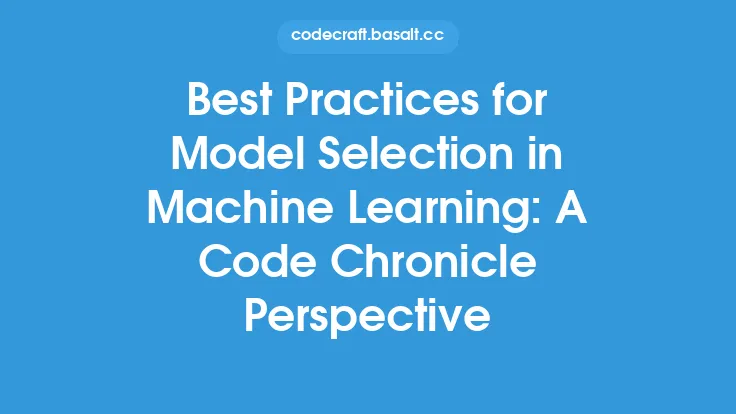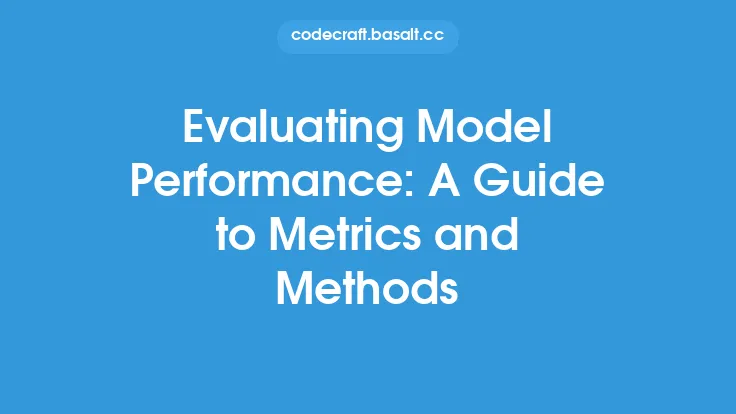When it comes to machine learning projects, choosing the right model is a crucial step that can significantly impact the performance and accuracy of the final product. With numerous models available, each with its strengths and weaknesses, selecting the most suitable one can be a daunting task, especially for those new to the field. In this article, we will delve into the key considerations and factors that can help guide the model selection process, ensuring that you choose the best model for your specific machine learning project.
Understanding Your Problem
Before selecting a model, it's essential to have a deep understanding of the problem you're trying to solve. This involves defining the project's objectives, identifying the type of problem (classification, regression, clustering, etc.), and understanding the characteristics of the data. For instance, if you're working on a classification problem, you'll want to choose a model that's well-suited for categorical outputs, such as logistic regression or decision trees. On the other hand, if you're dealing with a regression problem, you may want to consider models like linear regression or support vector machines.
Data Exploration and Preprocessing
Data exploration and preprocessing are critical steps in the model selection process. By examining the distribution of your data, identifying missing values, and understanding the relationships between variables, you can gain valuable insights that can inform your model choice. For example, if your data is highly imbalanced, you may want to consider models that can handle class imbalance, such as random forests or gradient boosting machines. Additionally, if your data contains a large number of features, you may want to consider models that can handle high-dimensional data, such as principal component analysis (PCA) or feature selection techniques.
Model Characteristics
Different models have unique characteristics that make them more or less suitable for specific problems. For instance, some models are more interpretable than others, while some are more prone to overfitting. When selecting a model, it's essential to consider factors such as:
- Interpretability: Can the model provide insights into the relationships between variables?
- Complexity: How complex is the model, and can it handle non-linear relationships?
- Scalability: Can the model handle large datasets and high-dimensional data?
- Robustness: How robust is the model to outliers and noisy data?
- Computational cost: What are the computational requirements of the model, and can it be trained efficiently?
Model Evaluation Metrics
Choosing the right evaluation metric is crucial in selecting the best model for your project. Different metrics can provide insights into different aspects of model performance, such as accuracy, precision, recall, F1-score, mean squared error, and R-squared. When selecting a model, it's essential to consider the metrics that are most relevant to your problem and use them to compare the performance of different models.
Common Machine Learning Models
Some of the most common machine learning models include:
- Linear regression: A linear model that predicts continuous outputs.
- Logistic regression: A linear model that predicts binary outputs.
- Decision trees: A tree-based model that can handle categorical and continuous outputs.
- Random forests: An ensemble model that combines multiple decision trees.
- Support vector machines: A linear or non-linear model that can handle high-dimensional data.
- Neural networks: A complex model that can handle non-linear relationships and high-dimensional data.
Model Selection Techniques
There are several model selection techniques that can help you choose the best model for your project, including:
- Cross-validation: A technique that involves training and testing a model on multiple subsets of the data.
- Grid search: A technique that involves searching for the optimal hyperparameters for a model.
- Random search: A technique that involves randomly searching for the optimal hyperparameters for a model.
- Bayesian optimization: A technique that involves using Bayesian methods to search for the optimal hyperparameters for a model.
Conclusion
Choosing the right model for your machine learning project is a critical step that requires careful consideration of several factors, including the problem type, data characteristics, model characteristics, and evaluation metrics. By understanding your problem, exploring and preprocessing your data, considering model characteristics, and using model selection techniques, you can choose the best model for your project and achieve optimal performance. Remember to stay focused on the evergreen principles of model selection, and don't be afraid to get technical and experiment with different models and techniques to find the one that works best for you.





